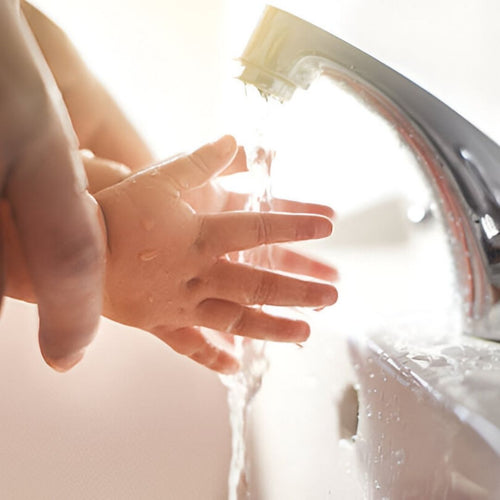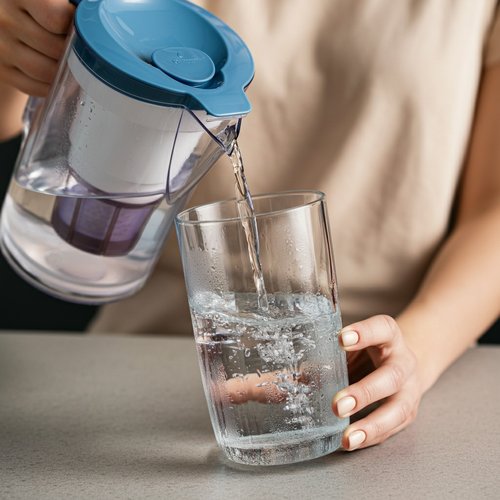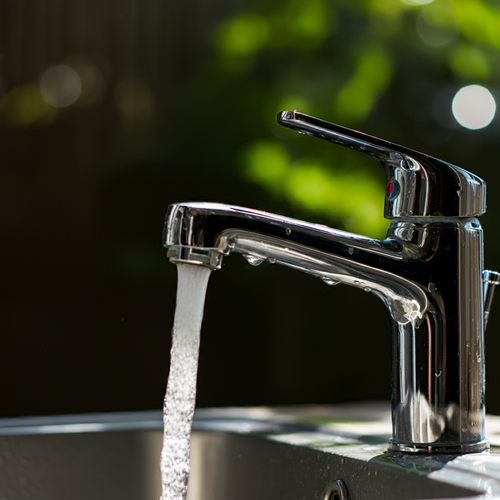Understanding Fluoride Removal
Importance of Filtering Fluoride
We've been sipping on fluoride-infused water for ages, mainly because it helps keep those pesky cavities at bay and gives our dental health a boost.
The sweet spot for fluoride in our tap water is around 0.7 parts per million (ppm) — too little, and your teeth might miss out; too much, and it's a whole different ball game.
Many of us might overlook that while a smidgen of fluoride is good for us, overdoing it can spark some health troubles. Thankfully, by filtering out fluoride from our tap water, we get to call the shots, curbing the risks while still enjoying some of its perks.
Here's a cheat sheet on what those fluoride numbers mean:
| Fluoride Level (ppm) | Health Implications |
|---|---|
| 0.7 | Perfect for pearly whites |
| Below 0.7 | Not enough for your chompers |
| 4.0 and above | Not good — beware! |
Fluoride in Household Water
Our everyday water is often running low on fluoride's magic touch. Funnily enough, about 38.8% of our northern neighbors in Canada and a whopping 73% of folks in the U.S. depend on fluoridated water.
Health whizzes, including the CDC, give a thumbs-up to adding fluoride to local water supplies. It's a clever way of spreading the dental health goodies, cutting down on toothaches and dentist visits.
As we ponder our water sources, it’s key to consider what fluoride content is flowing through our faucets. Check out this tally of typical fluoride levels in our water systems:
| Water Source | Typical Fluoride Levels (ppm) |
|---|---|
| Community Water Supply | 0.7 - 1.2 |
| Well Water (straight up) | All over the map |
| Bottled Water (with fluoride) | 0.2 - 0.6 |
By making sense of the fluoride in our water, we can smartly pick filtration systems that work for us. Get rid of that extra fluoride, and we amp up the safety and quality of our home’s water.
Effective Ways to Kick Out Fluoride
So, you're thinking about kicking fluoride outta your water? Well, there are a few savvy ways to do it! We’re here to sift through some prime options and get you closer to gulping down nothing but the good stuff. Let's talk about reverse osmosis, activated alumina filters, and ion exchange resins—three big guns in the battle against fluoride.
Reverse Osmosis Tech
Okay, let’s get straight to it—reverse osmosis (RO) is like the superhero cape of water filtration. These systems work by shoving water through a nifty semi-permeable membrane. This magical process gives a one-two punch to fluoride and nasty stuff like lead, copper, and all sorts of pesky chemicals we don’t want in our drink.
Reverse Osmosis (RO) setups are the real deal—kinda like your fancy fridge filter’s beefed-up cousin. Not to mention, they're great for tackling some other contaminants that have got folks worried lately.
| What It’s Got | Reverse Osmosis (RO) Vibe |
|---|---|
| How It Works | Very well |
| Chumps It Deals With | Fluoride, lead, other bad guys |
| Upkeep Level | Not too shabby |
Activated Alumina Filters
Don’t be fooled by the science-y name—activated alumina is really just some clever material that traps fluoride like a boss. Imagine water tiptoeing through an obstacle course of aluminum oxide and leaving fluoride behind. This setup's a winner for those who just wanna tackle fluoride without messing too much with other minerals.
You might see these water filters playing tag team with other systems to give water the once-over twice. Heads up though—gotta keep an eye on these fellas 'cause they need a refresh every now and then.
| What It’s Got | Activated Alumina |
|---|---|
| How It Works | Pretty awesome when fresh |
| Lifespan | Swap it out regularly |
| Upkeep Level | Needs TLC |
Ion Exchange Resins
Ion exchange is kinda like a swap meet for ions, booting out fluoride and making room for ones that play nice, like hydroxide. This tactic doesn’t just lower fluoride—it may put a spring in your water’s step with a taste upgrade.
There are two flavors of these filters—cation and anion. For fluoride, it’s all about those anion exchange resins. They’re not quite as flashy as Reverse Osmosis (RO) systems, but they hold their own if you’re not aiming for the whole shebang.
| What It’s Got | Ion Exchange Style |
|---|---|
| How It Works | Handles business efficiently |
| Taste Perk | Better sip potential |
| Upkeep Level | Super chill to modest |
Poking around these fluoride-filter options will serve us well in picking the right fit for our casa. Each of these methods trots out its own set of perks to match just what we’re after.
Choosing the Right Fluoride Filter
So, we've decided we need a fluoride filter system for our home. It's pretty crucial that we pick one that gets rid of the bad stuff, so let's look at what kind of filter might be the best fit for us.
Comprehensive Water Filtration
To really knock out fluoride, we should look at systems that clean water like a champ. Reverse osmosis (RO) systems are top performers here, wiping out up to 99% of junk, from fluoride to pesky metals and nasty chemicals like pesticides. They're beastly in a good way.
| Type of System | Fluoride Removal Efficiency | Other Stuff It Removes |
|---|---|---|
| Reverse Osmosis (RO) | Up to 99% | Lead, Copper, Pesticides, PFAS |
| Activated Alumina | Varies | Arsenic, Selenium, Chromium |
| Standard Pitcher/Fridge Filters | Not Much | Mainly sediment and chlorine |
Technologies for Optimal Results
Now, let's take a stroll through different filter technologies that get the job done well. Here's what's on the menu:
-
Reverse Osmosis (RO): This one's a powerhouse for filtering just about everything. Brands like SoftPro Water Systems are solid. Plus, the upkeep is a walk in the park, and you get speedy filtration once it's all set up.
-
Activated Alumina: It's a nifty option for getting rid of fluoride at the tap or where water comes in the house, though results can sway depending on how clean your water starts and the gizmo's setup.
-
Alkaline Filters: Usually, these guys are about spiffing up your water's pH, making it alkaline. But guess what? Some also lend a hand in cutting fluoride and while tossing in good-for-you minerals.
Factors to Consider for Home Use
We're almost there! Here are some things to chew on when picking out a fluoride filter:
✓ Water Quality & Source: If we're sipping city water, a filter system like SoftPro that goes after city-related ick is a strong pick. For well waters, we might need specialized gear to tackle its weird quirks.
✓ Maintenance & Reliability: Let's aim for filters systems that won't drive us bonkers with constant repairs.
✓ Budget: Look at both the upfront hit and what it'll cost us over time, like swapping out filters and keeping everything in good nick.
By diving into these nitty-gritty details, we can nail down a fluoride filter system that suits our pad just right, delivering clean, tasty water for everyone at home. Enjoy filtered water and cheers to healthy hydration!


















![Aldex Premium 10% Cross Link Resin for Water Softener [High Capacity]-SoftPro® Water Systems](http://www.softprowatersystems.com/cdn/shop/files/Aldex_10_Cross_Link_Resin_Premium_High_Capacity_for_Water_Softener_600x.jpg?v=1735853599)
























